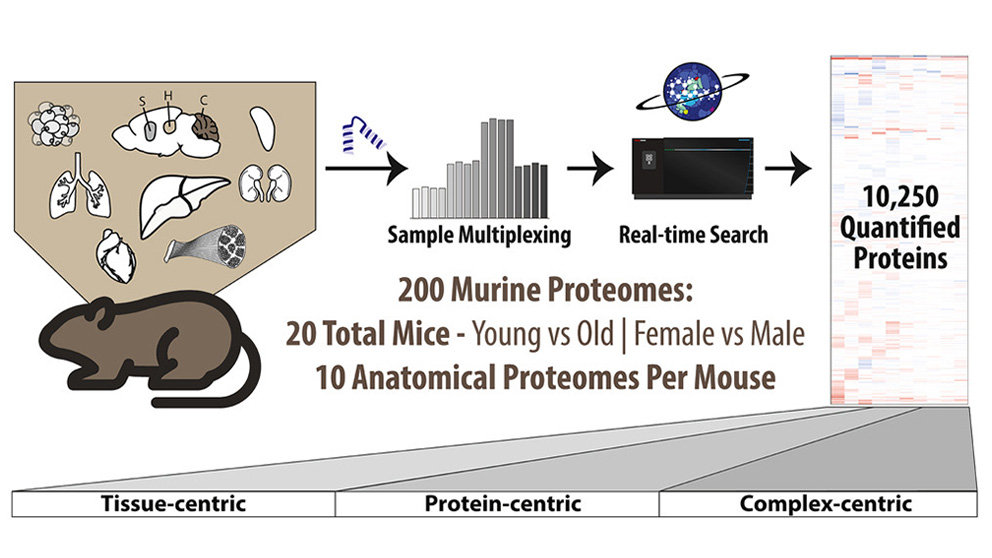
Gary Churchill, Ph.D., and team are working to identify signature signs of aging-related decline. They have identified protein changes across ten tissue types that depend on age and sex.
As we age, there is a systemic decrease of protein levels across many tissues found in our body. This overall loss of protein is part of the natural aging process, but it also puts us at greater risk for many diseases. Researchers use proteomic studies to determine how these proteins contribute to disease mechanisms, and they can analyze healthy versus abnormal protein states rather easily. It is much more difficult, however, to determine how these proteins change at specific ages, how they present in different tissues, and how they differ between sexes.
In a recent study published in Cell Reports, Jackson Laboratory (JAX) Professor Gary Churchill, Ph.D., and Devin Schweppe, Ph.D., from the University of Washington led a team that analyzed protein abundance to identify age-related protein changes shared across tissues. The Churchill Lab analyzed protein levels across 10 tissues for both female and male C57BL/6J mice. Their findings quantified 10,250 proteins that were altered with age, and many were detected across multiple tissues.
But what were the consequences of the alterations? Age-related protein variations were observed to result in changes to the immune system, cellular respiration, metabolism, and proteostasis (the regulation network responsible for keeping protein production functional and balanced). One unique finding showed that 13 proteins were consistently found across all ten tissues and were highly specific to an individual mouse’s immune response. Since these 13 proteins were found in all tissues examined, it suggests there is a cross-tissue response to infection that is unique to each mouse. Churchill and colleagues also found that changes to protein complexes differ based on age and sex. Their findings revealed age-by-sex interaction effects on certain proteins in tissues such as the kidney, liver, fat, and skeletal muscle, highlighting the importance of studying both sexes to understand the complete picture of aging.
The data from this study can be used as an interactive tool for the greater research community. Moving forward, incorporating a broader age range and more population-specific differences will help to fully understand the mechanisms underlying protein changes during the aging process.
Churchill’s previous work explored how background genetics affects protein levels in outbred mice, and he also produced an extensive proteomic analysis of genetically diverse mouse pluripotent stem cells.